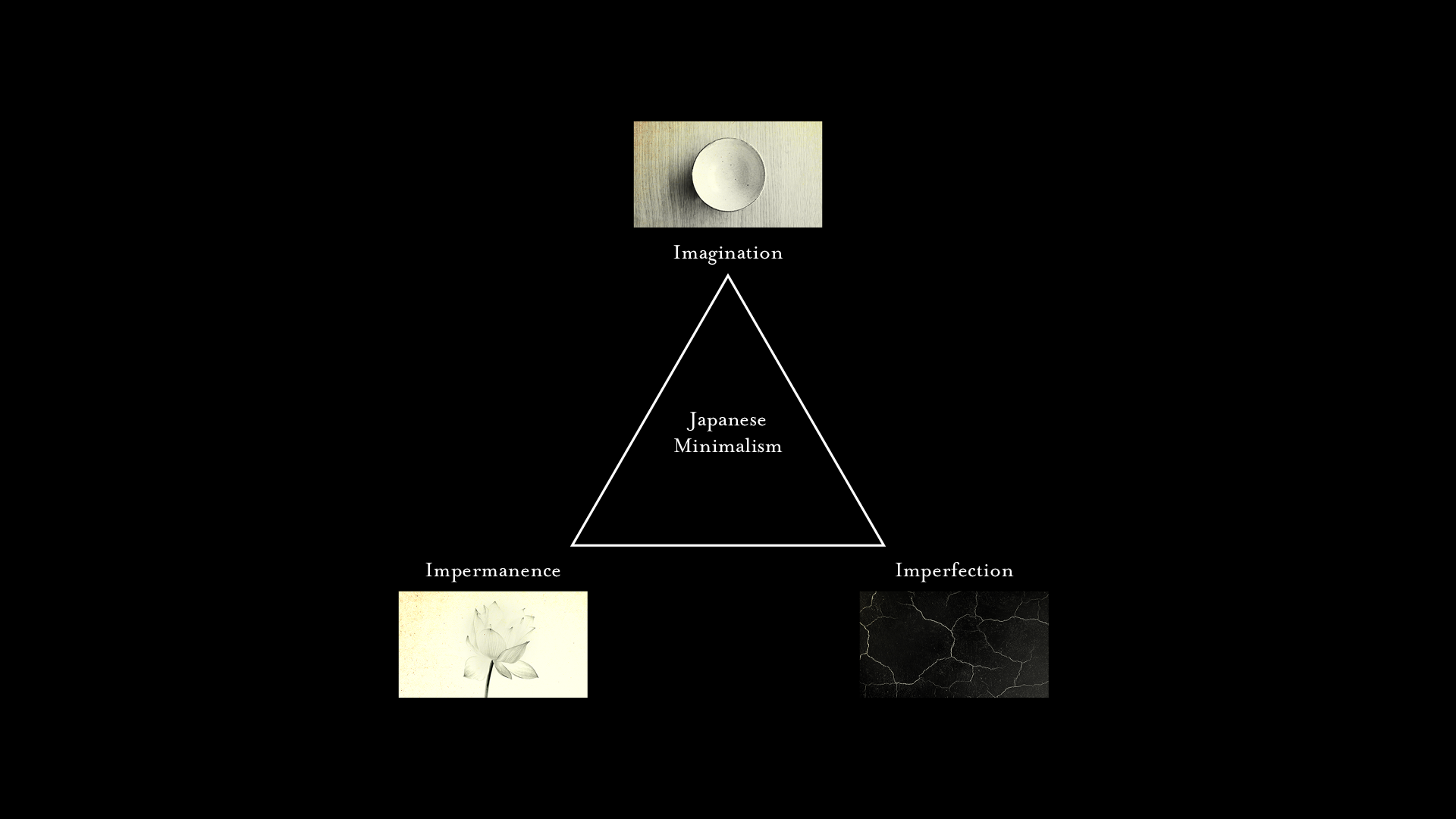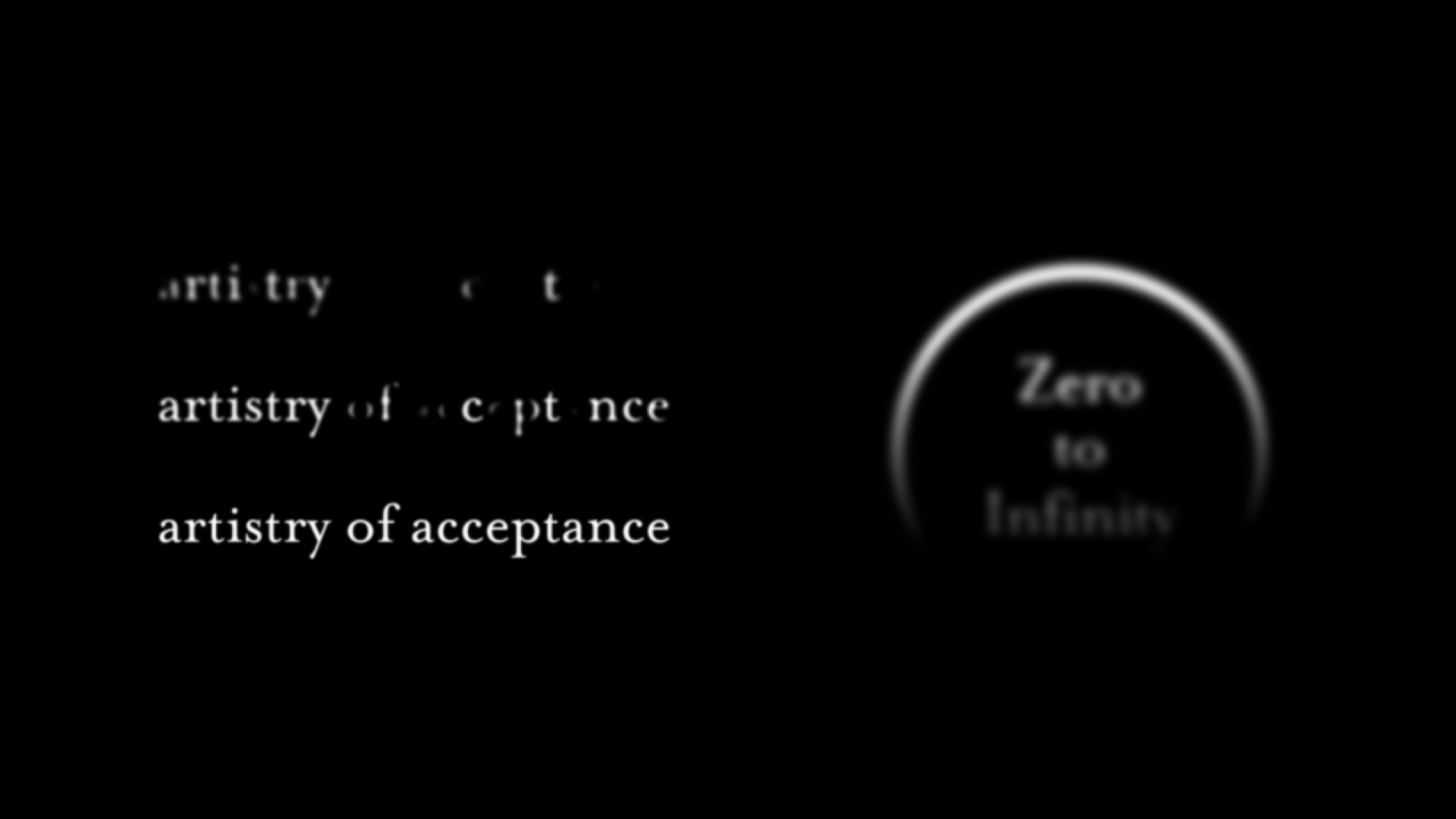This is not the beauty of reduction to 1, but discovering the infinity in the 0
Type:
Motion Graphic Thesis
Year:
2021
Zero to Infinity
The philosophies in the Japanese minimalism are the product of the tea ceremony culture, which used to establish the individuality of Japan. However, Japanese design in the new technological landscape lost its cultural adherence, flattening the design styles and deviating it from its cultural adherence. Motion graphics is a media type that exemplifies this. The goal of this thesis is to re-infuse the philosophy and style of Japanese minimalism in motion graphics to create a renaissance of Japanese cultural identity in the present field of design, countering the functionality of modernism and its association with the celebration of technology.
Motion Graphic Thesis
Year:
2021
Zero to Infinity
The philosophies in the Japanese minimalism are the product of the tea ceremony culture, which used to establish the individuality of Japan. However, Japanese design in the new technological landscape lost its cultural adherence, flattening the design styles and deviating it from its cultural adherence. Motion graphics is a media type that exemplifies this. The goal of this thesis is to re-infuse the philosophy and style of Japanese minimalism in motion graphics to create a renaissance of Japanese cultural identity in the present field of design, countering the functionality of modernism and its association with the celebration of technology.
If light is scarce then light is scarce; we will immerse ourselves in the darkness and there discover its own particular beauty
—Junichiro Tanizaki
Role:
Individual Project
Credits:
Miguel Lee (Instructor)
Samantha J. Fleming (Instructor)
Polly Geller (Voice Actor)
Individual Project
Credits:
Miguel Lee (Instructor)
Samantha J. Fleming (Instructor)
Polly Geller (Voice Actor)
Background:
The origin of Japanese minimalism comes from the Higashiyama culture, which developed around the 14th century before Modernism. The Japanese tea master Sen no Rikyu developed the ways and philosophies of a tea ceremony to project and sublimate the tranquil mindset that the people needed after the destruction from the Onin War. Japanese minimalism became the artistry of accepting the present and ambiguity rather than controlling the uncontrollable, which influenced the mind of many artists, writers and designers
The origin of Japanese minimalism comes from the Higashiyama culture, which developed around the 14th century before Modernism. The Japanese tea master Sen no Rikyu developed the ways and philosophies of a tea ceremony to project and sublimate the tranquil mindset that the people needed after the destruction from the Onin War. Japanese minimalism became the artistry of accepting the present and ambiguity rather than controlling the uncontrollable, which influenced the mind of many artists, writers and designers
Software:
Cinema 4D
After Effects
Cinema 4D
After Effects
Comparison With Modernism
Compared to the functionality and contrasts of Modernism, Japanese minimalism utilizes intentional ambiguity and abstraction by blending the positive and negative space. This concept is originates from the idea of creating harmony between human and nature.
Compared to the functionality and contrasts of Modernism, Japanese minimalism utilizes intentional ambiguity and abstraction by blending the positive and negative space. This concept is originates from the idea of creating harmony between human and nature.

Principles of Japanese Minimalism
Japanese minimalism is based on three core principles, which are imagination, impermanence and imperfection. Imagination is to imagine the infinite possibilities in the things that we don’t see, such as an empty bowl or the mountains scape hidden in the mist. Impermanence is the idea to accept the ephemeral of time and nature, to accept the impermanence of life. Imperfection is to accept and respect the raw, genuine state of things such as the textures or the cracks, to examine the universe through it.
Japanese minimalism is based on three core principles, which are imagination, impermanence and imperfection. Imagination is to imagine the infinite possibilities in the things that we don’t see, such as an empty bowl or the mountains scape hidden in the mist. Impermanence is the idea to accept the ephemeral of time and nature, to accept the impermanence of life. Imperfection is to accept and respect the raw, genuine state of things such as the textures or the cracks, to examine the universe through it.

Type Treatment
To communicate the idea of intentional ambiguity through typography, I used a blur effect that blends the letter form into the background, inspired by the broken ink spreads in haboku paintings.
To communicate the idea of intentional ambiguity through typography, I used a blur effect that blends the letter form into the background, inspired by the broken ink spreads in haboku paintings.

